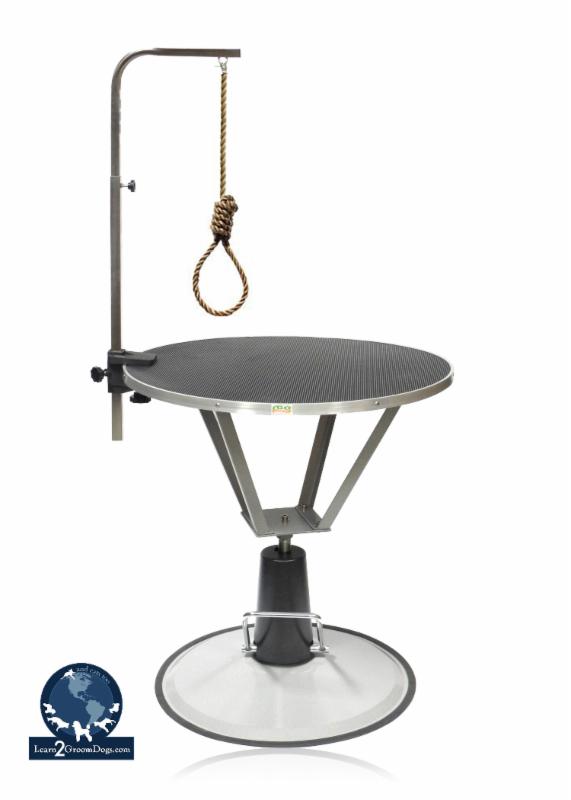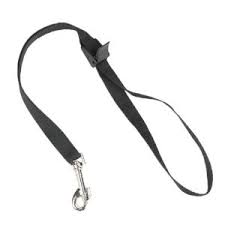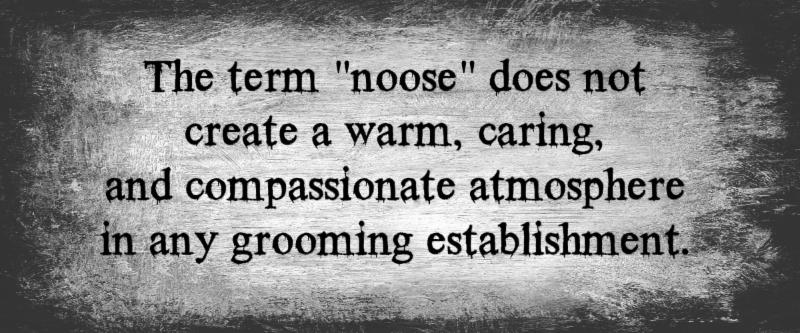The path of every successful bather, groomer, or pet stylist is slightly different. However, there are common threads that tie the most successful pet professionals together.
Here are the six common qualities that set top performers apart.
 A positive attitude helps you deal more easily with daily affairs. It brings brightness into your life, making it easier to avoid worries and negative thinking.When you’re positive, you have a clear, calm mind that is open to possibilities and see opportunities where others see nothing.
A positive attitude helps you deal more easily with daily affairs. It brings brightness into your life, making it easier to avoid worries and negative thinking.When you’re positive, you have a clear, calm mind that is open to possibilities and see opportunities where others see nothing.
And as a bonus, if your attitude is strong enough, it becomes contagious. Contagious to clients. To co-workers. To pets. Everyone. It’s as if you radiate positive energy around you.
2. They are learners.
 Wikipedia defines lifelong learning as, “The ongoing, voluntary, and self-motivated pursuit of knowledge for either personal or professional reasons.”
Wikipedia defines lifelong learning as, “The ongoing, voluntary, and self-motivated pursuit of knowledge for either personal or professional reasons.”
It is the non-stop development of skills and knowledge of a pet professional, at any level. It occurs through experiences during a lifetime. These experiences could be formal (training, tutoring, mentorship, apprenticeship, etc.) or informal (experiences and situations).
Learning is the key to achieving a person’s full potential. Learning does not stop once you get out of school. Folks who continue to learn are able to transform their lives. They become more successful at home, more successful with their families, more successful at work, and more successful within their salons and work environments.
3. They are always moving.
 Successful pet professionals are achievers. You aren’t going to see successful pet grooming teams dragging around the shop. Nope. They are buzzing with activity. They are constantly on task, on schedule, and looking for a way to shave moments off any task without sacrificing quality. Their hands and feet are never still.
Successful pet professionals are achievers. You aren’t going to see successful pet grooming teams dragging around the shop. Nope. They are buzzing with activity. They are constantly on task, on schedule, and looking for a way to shave moments off any task without sacrificing quality. Their hands and feet are never still.
They are constantly in motion. When I hear the term “occupational athletes,” I think of highly successful team members in any grooming department.
4. They are curious.
 Curiosity might have killed the cat, but a new study by psychologists suggests that curiosity is very good for people. If you want a rewarding career – be curious.
Curiosity might have killed the cat, but a new study by psychologists suggests that curiosity is very good for people. If you want a rewarding career – be curious.
Curiosity in your job can be a powerful tool. It does not matter which department you are in or if you wear all the hats in your business. If you can find different ways to stay hungry for knowledge and continue to be a lifelong learner, you will find your career to be much more rewarding.
The more curious you are, the more possibilities you will have throughout your lifetime. Open your eyes and look around.
5. They are persistent.
 Being persistent after it seems like everything has failed is one of the hardest things to do. You just want to give up. Give up on the dog. Give up on a technique. Give up on yourself.
Being persistent after it seems like everything has failed is one of the hardest things to do. You just want to give up. Give up on the dog. Give up on a technique. Give up on yourself.
When trying to be persistent, it is important that you have a goal in mind. Whether it’s getting that dog squeaky clean, the clipper work baby butt smooth, a velvet finish on a hand scissor dog, or just trying to add an extra dog to your roster on a consistent basis, don’t give up. Even if you don’t see immediate results, keep trying. Keep pushing yourself. Having an end result in mind will keep you motivated, which builds persistence.
6. They are passionate.
 If you want to be successful at your job and move up, you need to be passionate about your work. You need to be motivated and driven to be the best you can be. Passionate people love their work.
If you want to be successful at your job and move up, you need to be passionate about your work. You need to be motivated and driven to be the best you can be. Passionate people love their work.
Passion, motivation, drive. Call it what you want. Bottom line: it’s that self-driven attitude towards your job and your work that can help lead you down the path to success.
 Passion is an emotion that comes from within you. It’s your enthusiasm. Your motivation. Your drive.
Passion is an emotion that comes from within you. It’s your enthusiasm. Your motivation. Your drive.
I guarantee that others will be positively impacted by your personal passion towards pets. Passion does not go unnoticed. People will see how well you do your job and your attitude towards it. They will see when a task is hard and you don’t give in – when you apply yourself even more to overcome it. They will notice your drive and your motivation and consider how you would do in another position.
Becoming stagnant in a career is boring. The work gets sloppy. Customer service quality goes down. The wonderful part of being involved with the pet industry is that there is no limit to your personal growth. I love being surrounded by people that have these six qualities firmly developed in their lives. They are energizing and refreshing to be around. Their energy is contagious!
How many of these six traits to you have? How many do you feel you could improve on? Jump over to the Learn2GroomDogs Facebook page and tell us about it!
Happy trimming!
~Melissa

 Think about how the medical profession is organized… when you need a routine annual medical exam, do you book an appointment with a Podiatrist? No. You’d get an appointment at your regular clinic, where they deal primarily with routine and preventive health care. Depending on your condition, you might get an appointment with a nurse practitioner who is qualified to treat a certain spectrum of illnesses. For situations requiring more formal training and experience, you’d see your family doctor. If a health disorder required attention from an expert in a particular field of study, you would seek the help of a specialist.
Think about how the medical profession is organized… when you need a routine annual medical exam, do you book an appointment with a Podiatrist? No. You’d get an appointment at your regular clinic, where they deal primarily with routine and preventive health care. Depending on your condition, you might get an appointment with a nurse practitioner who is qualified to treat a certain spectrum of illnesses. For situations requiring more formal training and experience, you’d see your family doctor. If a health disorder required attention from an expert in a particular field of study, you would seek the help of a specialist. efficiently with clippers. Groomers are comfortable with a variety of clippers and blade choices. They can handle a wide range of coat types on both bath and brush style pets as well as simple, low maintenance haircuts. They have basic knowledge of how to work with scissors and blenders, getting adequate results for non-discriminating clients.
efficiently with clippers. Groomers are comfortable with a variety of clippers and blade choices. They can handle a wide range of coat types on both bath and brush style pets as well as simple, low maintenance haircuts. They have basic knowledge of how to work with scissors and blenders, getting adequate results for non-discriminating clients. How in the world do dog groomers and pet stylists get burned out?
How in the world do dog groomers and pet stylists get burned out? Set a realistic goal. The target could be related to reaching a sales goal. What about a customer satisfaction goal like improving client retention rates or rebooking appointments at checkout? Look at sprucing up and reorganizing your salon so it’s more pleasant and easier to work in. Maybe you want to be officially certified in some area that would lend credibility to what you do professionally. Enter a grooming competition – or work toward becoming a consistent winner in the contest area. All of these are super goals, but it’s just the tip of the iceberg. Finds goals that motivate YOU.
Set a realistic goal. The target could be related to reaching a sales goal. What about a customer satisfaction goal like improving client retention rates or rebooking appointments at checkout? Look at sprucing up and reorganizing your salon so it’s more pleasant and easier to work in. Maybe you want to be officially certified in some area that would lend credibility to what you do professionally. Enter a grooming competition – or work toward becoming a consistent winner in the contest area. All of these are super goals, but it’s just the tip of the iceberg. Finds goals that motivate YOU. Every industry has its own set of technical terms. Those of us behind the grooming table are familiar with them, but have you stopped to think how our terminology sounds to customers? The words we use can paint a very negative picture to the client. Of course, we never intend it that way – we’re just using words and phrases that groomers have used for years.
Every industry has its own set of technical terms. Those of us behind the grooming table are familiar with them, but have you stopped to think how our terminology sounds to customers? The words we use can paint a very negative picture to the client. Of course, we never intend it that way – we’re just using words and phrases that groomers have used for years. Although this is a major safety item used in most salons, the term I hear routinely to describe this piece of equipment is the word, “noose.” Every time I hear it, the hackles on the back of MY neck stand up.
Although this is a major safety item used in most salons, the term I hear routinely to describe this piece of equipment is the word, “noose.” Every time I hear it, the hackles on the back of MY neck stand up. Think about how your terms can negatively affect your clients. Most of the time, we are so busy just trying to stay ahead of the grooming game, we never stop to think how we sound to the client. We may love our four-footed customers, but it’s our two-legged clients we really need to win over – gaining their trust – and their business.
Think about how your terms can negatively affect your clients. Most of the time, we are so busy just trying to stay ahead of the grooming game, we never stop to think how we sound to the client. We may love our four-footed customers, but it’s our two-legged clients we really need to win over – gaining their trust – and their business. If you’ve been watching the news lately, you have probably heard about the newest illness threatening our pets. Canine influenza (CI), or dog flu, is a highly contagious infection that can have serious implications not only for our pets, but for your business and our industry.
If you’ve been watching the news lately, you have probably heard about the newest illness threatening our pets. Canine influenza (CI), or dog flu, is a highly contagious infection that can have serious implications not only for our pets, but for your business and our industry. Preventing the Flu: Step One
Preventing the Flu: Step One

















 Spring is edging closer – and not a moment too soon! Many of us will be seeing a lot of pets that are ready for a great makeover in the coming weeks. With that in mind, I thought it was the perfect time to revisit my blog on salvage work.
Spring is edging closer – and not a moment too soon! Many of us will be seeing a lot of pets that are ready for a great makeover in the coming weeks. With that in mind, I thought it was the perfect time to revisit my blog on salvage work.